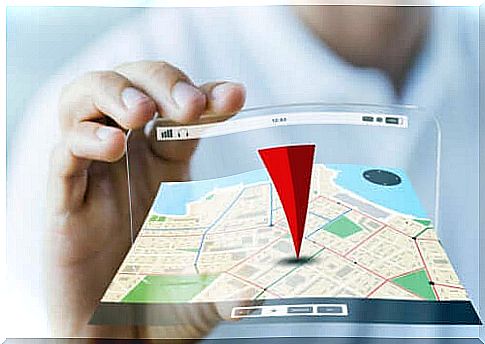What Is Spatial Orientation And How To Develop It?

You wake up in your bed in the morning. You get up, walk sleepily down the hall, bypass the heater to avoid a collision. In such a simple situation, spatial orientation works .
After breakfast, you get dressed, pick up your bag and leave the house. You walk into the bakery, cross the road, turn left and enter the building. However, not all of them have the same developed spatial orientation.
Surely you know someone who knows technical drawings or has a special talent for packing travel suitcases. As long as we do not suffer from a disease or problem, we have sufficient capacity to move around in the world around us.
What is spatial orientation?
Spatial orientation is a complex cognitive ability that allows us to be aware of ourselves and our position relative to other objects. Therefore, it is related to our perception, the ability to identify and process information from the environment.
Based on the data that reaches us, we create mental representations of the environment and learn to move around in it. The following variables are involved:
- Location: the location of the facilities.
- Distance: the position of objects in relation to each other.
- Proprioception: awareness of your own body.

Why is it worth working on spatial orientation?
Spatial orientation is the basis of everyday life. It allows us to relate to objects in our environment and perform basic activities.
The spatial orientation features include:
- Identifying the size and shape of objects, perceiving them in three dimensions and recognizing them from different angles. It is about recognizing their position in space, determining their dynamics or static, and assessing their distance from us.
- Reading and writing, understanding structure and grammar.
- Using mathematical concepts and performing activities.
- Maintaining adequate distance in contacts with other people.
- Body awareness and movement.
- Distinguishing right from left, following the road, playing sports, getting dressed, driving machines and vehicles.
How is spatial orientation developing?
Spatial orientation is an innate ability which, however, can be developed. The right hemisphere of the brain is responsible for it. She herself begins to manifest from an early age.
As the child grows and deepens its relationship with its environment, it begins to form and understand basic concepts such as shape, size, depth and location. Its spatial orientation strengthens and translates into development in the following aspects:
- Acquiring awareness of your own body. The child begins to understand how his body is built. The sense of proprioception receives information through receptors in the skin, muscles and joints. These processes stimulate activities such as covering the toddler with a blanket, massaging or reaching for toys.
- The vestibular system provides information about its position (whether it lies or sits), as well as its displacement and speed.
- When a child gets to know his body, its positions and functions, he begins to relate to his surroundings through the senses. Receives information about objects and people nearby. Using his memory, he begins to plan his movements.
Spatial orientation: examples
To better understand the importance of space perception, here are some examples from everyday life:
- When you are in a new city and want to visit the most important monuments, spatial orientation enables you to read the map.
- When you want to put your suitcase in a locker on the plane, and this one is almost full, spatial orientation makes it easier for you to find the right place.
- It also allows you to calculate the appropriate angle and distance when parking or find things at home based on someone’s instructions.

Spatial imagination is an aspect that can be developed
Although spatial orientation is an innate ability, there are various ways to develop it. It is helpful to solve puzzles, play chess, video games or Tetris or Minecraft .
Imagining home spaces or drawing from different perspectives can also be useful. As with any skill, practice makes perfect.









